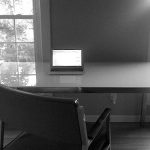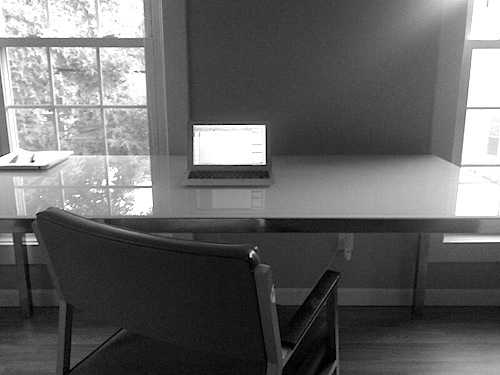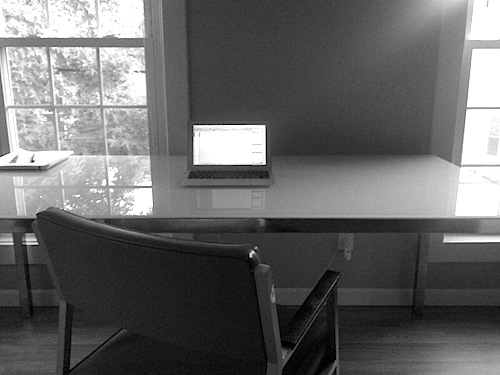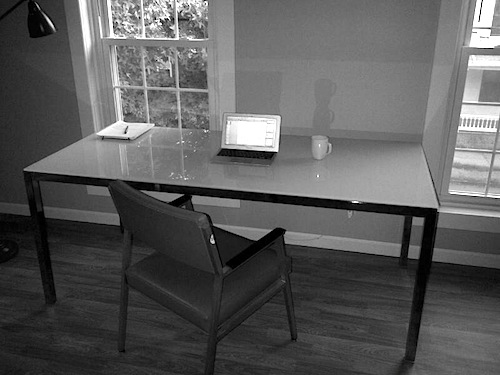
Although I don’t have a daily routine, I spend most mornings in solitude, writing at my desk—my minimalist workspace. The picture above is honestly what my desk looks like every day (viz. I didn’t tidy-up before taking this photo. If you look close enough you can even see my Chapstick on top of the stack of notes on the left—sloppy, I know).
Just like other aspects of my life, minimalism has allowed me get rid of the unnecessary and keep the essential. Thus, my desk (which actually used to be a diningroom table) contains only what I need to work.
My work is writing. To write, I need a computer, a word processing program (I use Apple iWork Pages), a chair, a pen, a notebook, drafts of my printed notes, and a lamp (because I usually get started before first light).
A cup of coffee or glass of water is optional:
Eliminating the Unnecessary
I used to lie to myself. I used to think I needed so much more to be “productive.” I used to think I needed an internet connection and a clock on the wall and a bookshelf brimming with books and a file cabinet and file folders and three-ring binders and a scanner and a stapler and a desk calendar and a white board and a cork board and an office-supplies organizer containing paperclips and thumbtacks and pens and highlighters and notecards and Post-its and many, many other things.
But over time I realized I didn’t need those things. So I stripped them away, one thing at a time, until I was left with what I have now. And who knows: perhaps one day I’ll get rid of my notebook or my printed notes. Or perhaps I’ll add an item or two—if it adds value to what I’m doing.
I still have some office supplies, but they are in a small box in a nearby closet. I don’t need to use them every day, so I keep them out of the way so I can focus on what’s important.
The point is not to get rid of everything except your computer and some notes. Rather, the point is to get rid of the superfluous in favor of the essential. Doing so eliminates unwanted stress, allows us to avoid distractions, and helps us focus on what’s important.
So, even if your work requires more paperwork or certain tools to accomplish your tasks, it’s still important to ask yourself if everything in your workspace is necessary.
An Experiment
As a experiment, why not give this a shot: get rid of everything today (box it up or simply get it out of the way), then slowly reintroduce items to your workspace as needed over the next few days. Then get rid of anything you didn’t reintroduce (anything you don’t use this week). It’s like having a miniature Packing Party for your workspace. Are you willing to experiment?
—
You can subscribe to this site via email or RSS to receive free updates. Follow us on Twitter, Facebook, and Google+ if you like funny things, good quotes, and random musings.
—
Please share this essay with others if you found value in it.
Source:
My Minimalist Workspace


